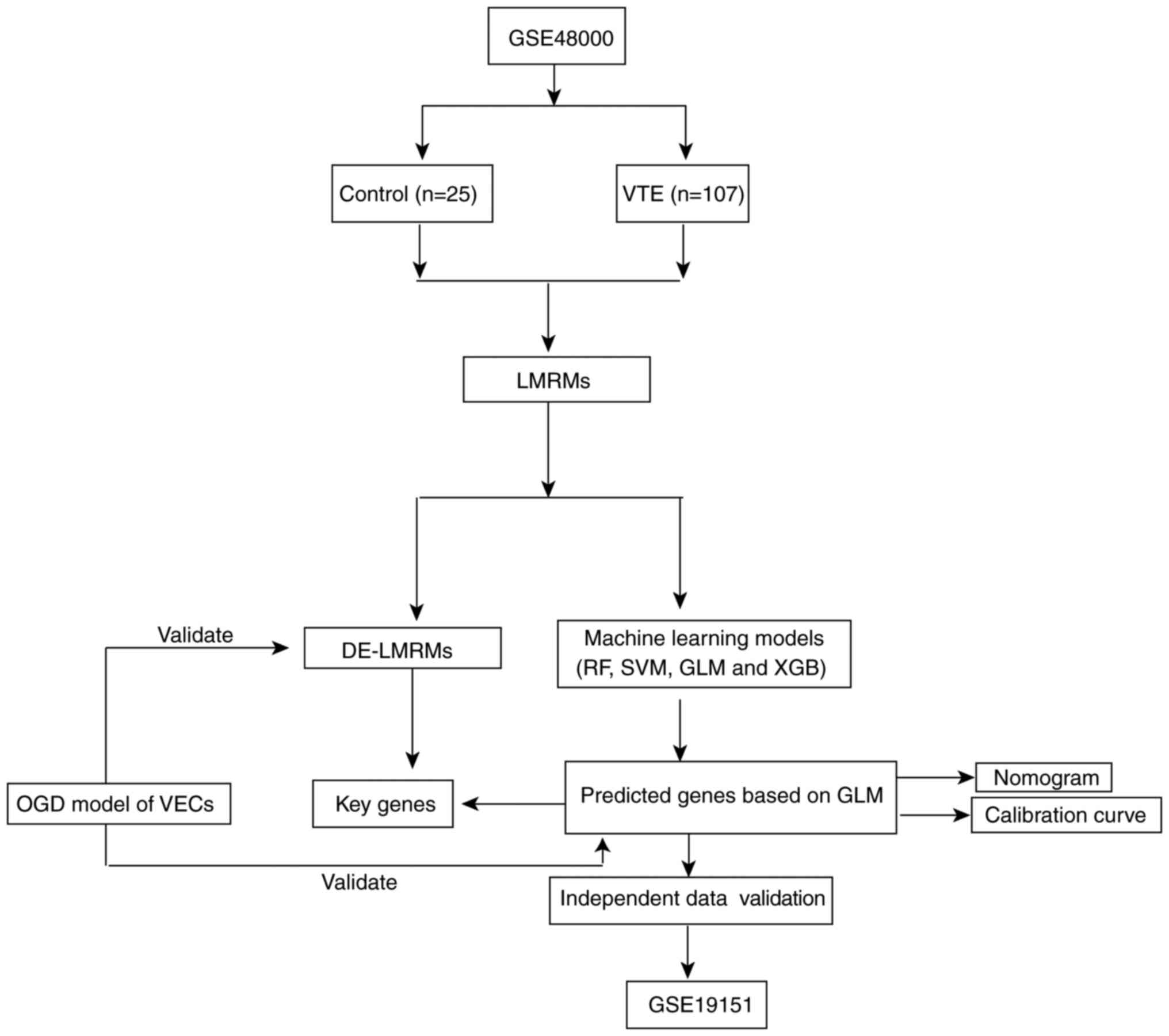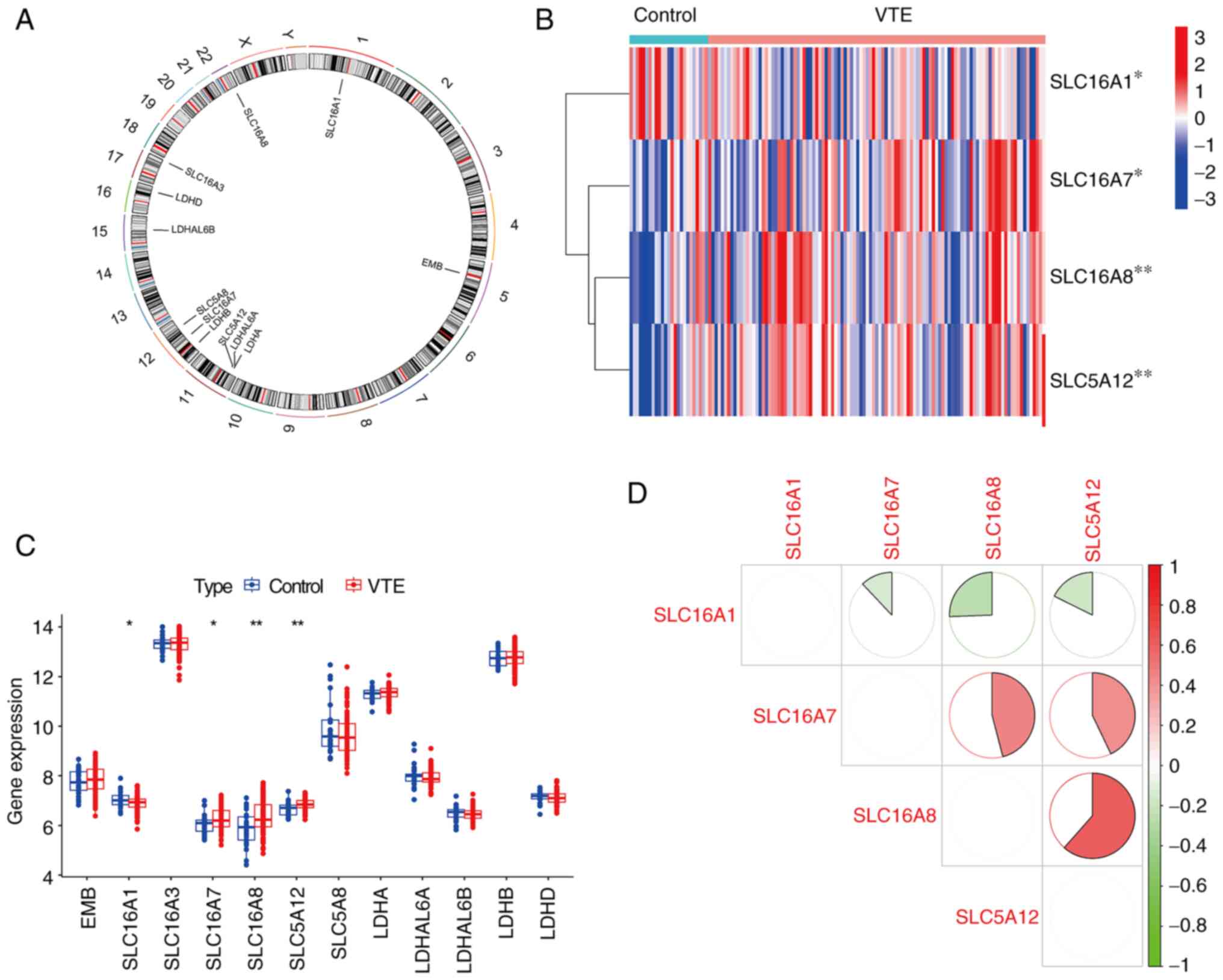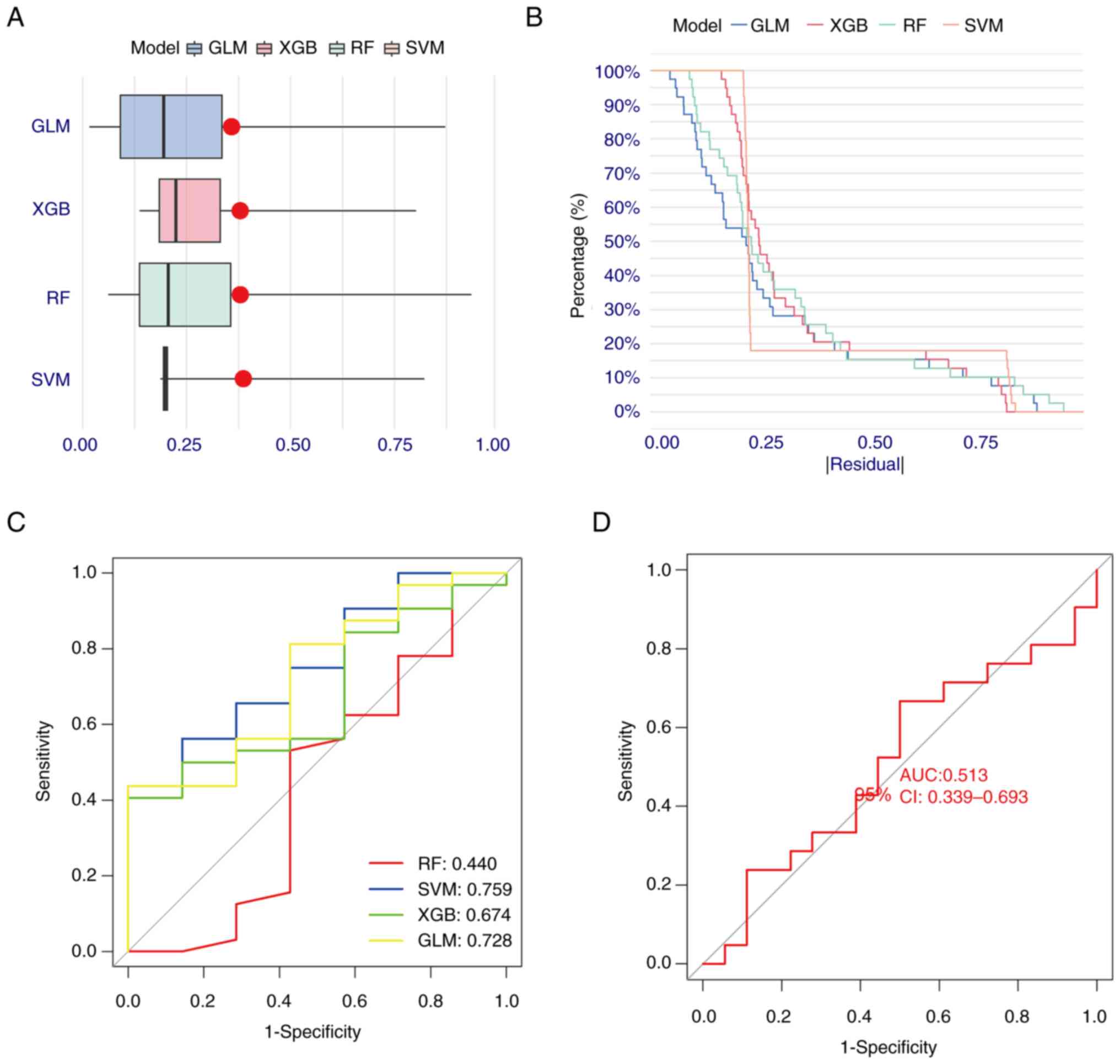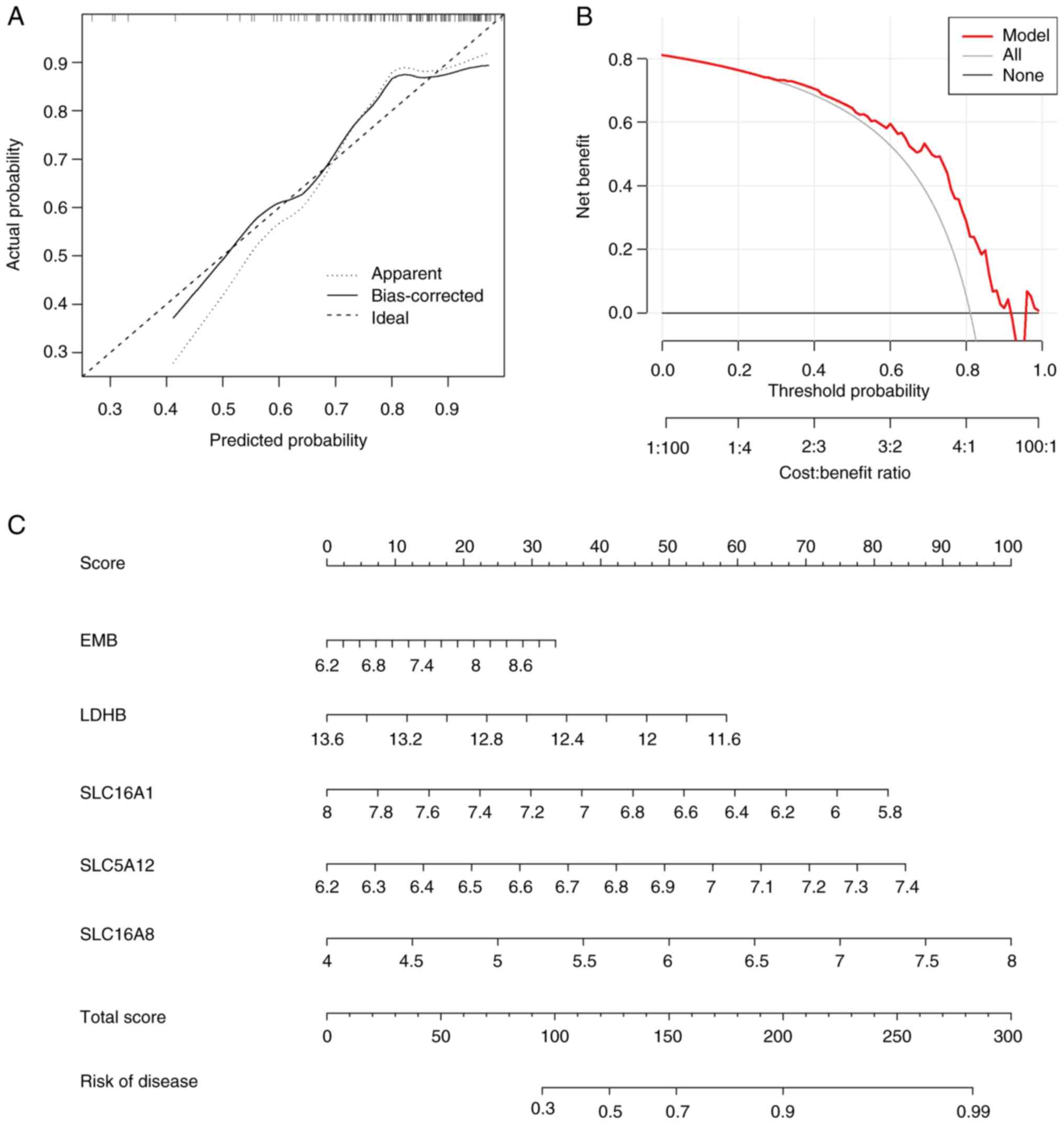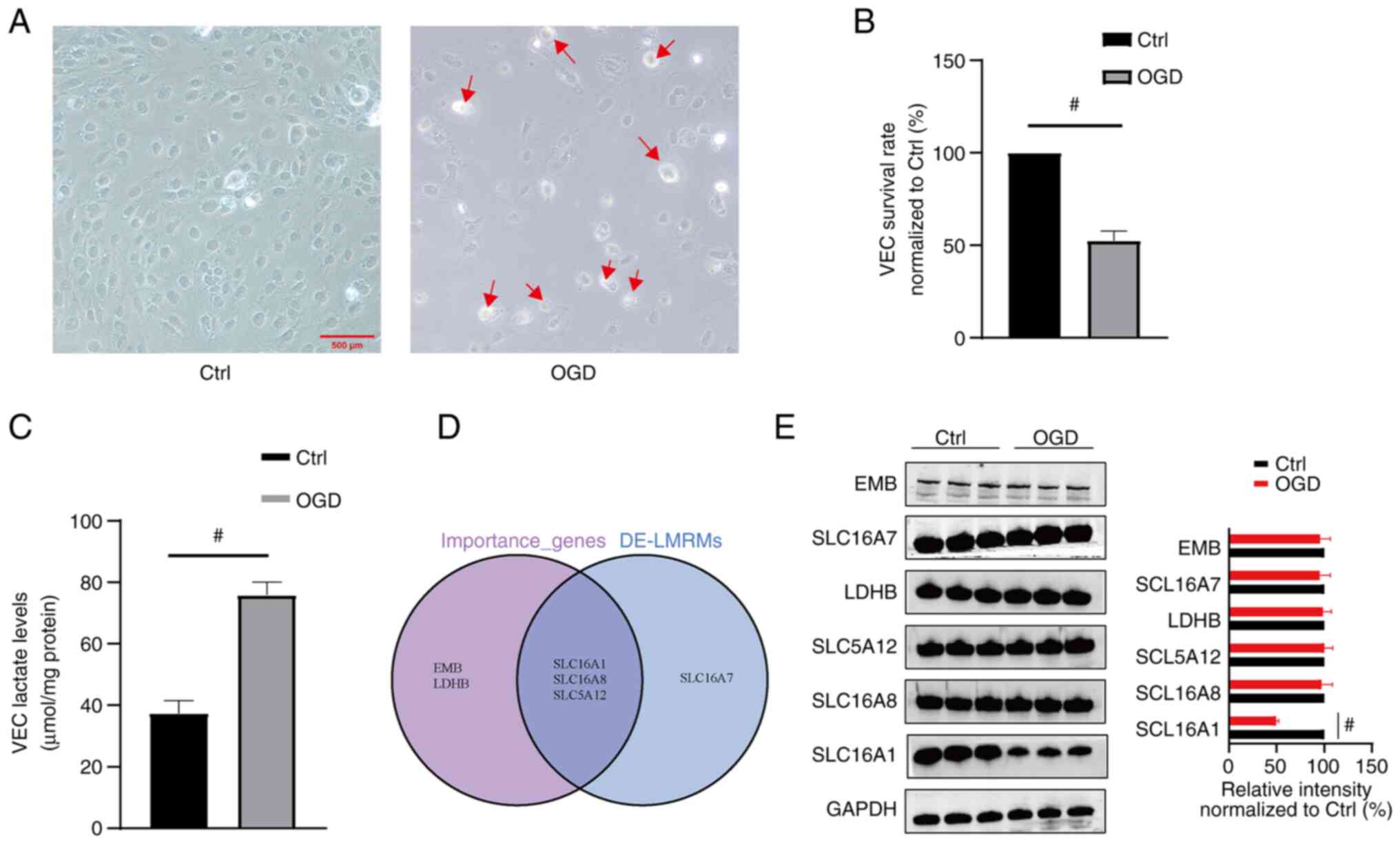|
1
|
Battinelli EM, Murphy DL and Connors JM:
Venous thromboembolism overview. Hematol Oncol Clin North Am.
26:345–367, ix. 2012.PubMed/NCBI View Article : Google Scholar
|
|
2
|
Bartholomew JR: Update on the management
of venous thromboembolism. Cleve Clin J Med. 84 (Suppl 3):39–46.
2017.PubMed/NCBI View Article : Google Scholar
|
|
3
|
Klok FA, van der Hulle T, den Exter PL,
Lankeit M, Huisman MV and Konstantinides S: The post-PE syndrome: A
new concept for chronic complications of pulmonary embolism. Blood
Rev. 28:221–226. 2014.PubMed/NCBI View Article : Google Scholar
|
|
4
|
Palta S, Saroa R and Palta A: Overview of
the coagulation system. Indian J Anaesth. 58:515–523.
2014.PubMed/NCBI View Article : Google Scholar
|
|
5
|
Torres C, Matos R, Morais S, Campos M and
Lima M: Soluble endothelial cell molecules and circulating
endothelial cells in patients with venous thromboembolism. Blood
Coagul Fibrinolysis. 28:589–595. 2017.PubMed/NCBI View Article : Google Scholar
|
|
6
|
Pilard M, Ollivier EL, Gourdou-Latyszenok
V, Couturaud F and Lemarié CA: Endothelial cell phenotype, a major
determinant of venous thrombo-inflammation. Front Cardiovasc Med.
9(864735)2022.PubMed/NCBI View Article : Google Scholar
|
|
7
|
Poredos P and Jezovnik MK: The role of
inflammation in venous thromboembolism and the link between
arterial and venous thrombosis. Int Angiol. 26:306–311.
2007.PubMed/NCBI
|
|
8
|
Barsh GS, Molina-Ortiz P, Orban T, Martin
M, Habets A, Dequiedt F and Schurmans S: Rasa3 controls turnover of
endothelial cell adhesion and vascular lumen integrity by a
Rap1-dependent mechanism. PLoS Genet. 14(e1007195)2018.PubMed/NCBI View Article : Google Scholar
|
|
9
|
Yang K, Fan M, Wang X, Xu J, Wang Y, Gill
PS, Ha T, Liu L, Hall JV, Williams DL and Li C: Lactate induces
vascular permeability via disruption of VE-cadherin in endothelial
cells during sepsis. Sci Adv. 8(eabm8965)2022.PubMed/NCBI View Article : Google Scholar
|
|
10
|
Yang K, Holt M, Fan M, Lam V, Yang Y, Ha
T, Williams DL, Li C and Wang X: Cardiovascular dysfunction in
covid-19: Association between endothelial cell injury and lactate.
Front Immunol. 13(868679)2022.PubMed/NCBI View Article : Google Scholar
|
|
11
|
Mamun AA, Hayashi H, Yamamura A, Nayeem MJ
and Sato M: Hypoxia induces the translocation of glucose
transporter 1 to the plasma membrane in vascular endothelial cells.
J Physiol Sci. 70(44)2020.PubMed/NCBI View Article : Google Scholar
|
|
12
|
Shao H and Li S: A new perspective on HIV:
Effects of HIV on brain-heart axis. Front Cardiovasc Med.
10(1226782)2023.PubMed/NCBI View Article : Google Scholar
|
|
13
|
Edwards YH, Povey S, LeVan KM, Driscoll
CE, Millan JL and Goldberg E: Locus determining the human
sperm-specific lactate dehydrogenase, LDHC, is syntenic with LDHA.
Dev Genet. 8:219–232. 1987.PubMed/NCBI View Article : Google Scholar
|
|
14
|
Mdluli K, Booth MP, Brady RL and Rumsby G:
A preliminary account of the properties of recombinant human
glyoxylate reductase (GRHPR), LDHA and LDHB with glyoxylate, and
their potential roles in its metabolism. Biochim Biophys Acta.
1753:209–216. 2005.PubMed/NCBI View Article : Google Scholar
|
|
15
|
Koukourakis MI, Giatromanolaki A, Sivridis
E, Bougioukas G, Didilis V, Gatter KC and Harris AL: Tumour and
Angiogenesis Research Group. Lactate dehydrogenase-5 (LDH-5)
overexpression in non-small-cell lung cancer tissues is linked to
tumour hypoxia, angiogenic factor production and poor prognosis. Br
J Cancer. 89:877–885. 2003.PubMed/NCBI View Article : Google Scholar
|
|
16
|
Stabenow LK, Zibrova D, Ender C, Helbing
DL, Spengler K, Marx C, Wang ZQ and Heller R: Oxidative glucose
metabolism promotes senescence in vascular endothelial cells.
Cells. 11(2213)2022.PubMed/NCBI View Article : Google Scholar
|
|
17
|
Franczyk B, Gluba-Brzózka A, Ławiński J,
Rysz-Górzyńska M and Rysz J: Metabolomic profile in venous
thromboembolism (VTE). Metabolites. 11(495)2021.PubMed/NCBI View Article : Google Scholar
|
|
18
|
Lim CS, Kiriakidis S, Sandison A, Paleolog
EM and Davies AH: Hypoxia-inducible factor pathway and diseases of
the vascular wall. J Vasc Surg. 58:219–230. 2013.PubMed/NCBI View Article : Google Scholar
|
|
19
|
Li WQ, Qin ZS, Chen S, Cheng D, Yang SC,
Choi YMM, Chu B, Zhou WH and Zhang ZJ: Hirudin alleviates acute
ischemic stroke by inhibiting NLRP3 inflammasome-mediated
neuroinflammation: In vivo and in vitro approaches. Int
Immunopharmacol. 110(108967)2022.PubMed/NCBI View Article : Google Scholar
|
|
20
|
Wang Z, Liu P, Hu M, Lu S, Lyu Z, Kou Y,
Sun Y, Zhao X, Liu F and Tian J: Naoxintong restores ischemia
injury and inhibits thrombosis via COX2-VEGF/ NFκB signaling. J
Ethnopharmacol. 270(113809)2021.PubMed/NCBI View Article : Google Scholar
|
|
21
|
Li S, Long Q, Nong L, Zheng Y, Meng X and
Zhu Q: Identification of immune infiltration and
cuproptosis-related molecular clusters in tuberculosis. Front
Immunol. 14(1205741)2023.PubMed/NCBI View Article : Google Scholar
|
|
22
|
Li S, Zheng Y, Long Q, Nong J, Shao H,
Liang G and Wu F: Drug-drug interactions between propofol and ART
drugs: Inhibiting neuronal activity by affecting glucose
metabolism. CNS Neurosci Ther: Aug 31, 2023 (Epub ahead of
print).
|
|
23
|
Xie X, Hu Y, Ye T, Chen Y, Zhou L, Li F,
Xi X, Wang S, He Y, Gao X, et al: Therapeutic vaccination against
leukaemia via the sustained release of co-encapsulated anti-PD-1
and a leukaemia-associated antigen. Nat Biomed Eng. 5:414–428.
2020.PubMed/NCBI View Article : Google Scholar
|
|
24
|
Wang S, Zhou L, Ji N, Sun C, Sun L, Sun J,
Du Y, Zhang N, Li Y, Liu W, et al: Targeting acyp1-mediated
glycolysis reverses lenvatinib resistance and restricts
hepatocellular carcinoma progression. Drug Resist Updat,.
69(100976)2023.PubMed/NCBI View Article : Google Scholar
|
|
25
|
Kumar P, Nagarajan A and Uchil PD:
Analysis of cell viability by the MTT assay. Cold Spring Harb
Protoc. 2018:2018.PubMed/NCBI View Article : Google Scholar
|
|
26
|
Sivaprakasam S, Bhutia YD, Yang S and
Ganapathy V: Short-chain fatty acid transporters: Role in colonic
homeostasis. Compr Physiol. 8:299–314. 2017.PubMed/NCBI View Article : Google Scholar
|
|
27
|
Zhao X, Lu Y, Li S, Guo F, Xue H, Jiang L,
Wang Z, Zhang C, Xie W and Zhu F: Predicting renal function
recovery and short-term reversibility among acute kidney injury
patients in the ICU: Comparison of machine learning methods and
conventional regression. Ren Fail. 44:1327–1338. 2022.PubMed/NCBI View Article : Google Scholar
|
|
28
|
Xu B, Zhang M, Zhang B, Chi W, Ma X, Zhang
W, Dong M, Sheng L, Zhang Y, Jiao W, et al: Embigin facilitates
monocarboxylate transporter 1 localization to the plasma membrane
and transition to a decoupling state. Cell Rep.
40(111343)2022.PubMed/NCBI View Article : Google Scholar
|
|
29
|
Li SS, Luedemann M, Sharief FS, Takano T
and Deaven LL: Mapping of human lactate dehydrogenase-A -B and -C
genes and their related sequences: the gene for LDHC is located
with that for LDHA on chromosome 11. Cytogenet Cell Genet.
48:16–18. 1988.PubMed/NCBI View Article : Google Scholar
|
|
30
|
Markert CL, Shakle JB and Whitt GS:
Evolution of a gene. Multiple genes for LDH isozymes provide a
model of the evolution of gene structure, function and regulation.
Science. 189:102–114. 1975.PubMed/NCBI View Article : Google Scholar
|
|
31
|
Swiderek K and Paneth P: Differences and
similarities in binding of pyruvate and L-lactate in the active
site of M4 and H4 isoforms of human lactate dehydrogenase. Arch
Biochem Biophys. 505:33–41. 2011.PubMed/NCBI View Article : Google Scholar
|
|
32
|
Srivastava AK, Kalita J, Haris M, Gupta RK
and Misra UK: Radiological and histological changes following
cerebral venous sinus thrombosis in a rat model. Neurosci Res.
65:343–346. 2009.PubMed/NCBI View Article : Google Scholar
|
|
33
|
Song W, Ci H, Tian G, Zhang Y and Ge X:
Edoxaban improves venous thrombosis via increasing hydrogen sulfide
and homocysteine in rat model. Mol Med Rep. 16:7706–7714.
2017.PubMed/NCBI View Article : Google Scholar
|
|
34
|
Zhao Z, Wu C, He X, Zhao E, Hu S, Han Y,
Wang T, Chen Y, Liu T and Huang S: Microrna let-7f alleviates
vascular endothelial cell dysfunction via targeting HMGA2 under
oxygen-glucose deprivation and reoxygenation. Brain Res.
1772(147662)2021.PubMed/NCBI View Article : Google Scholar
|
|
35
|
Benjamin D, Robay D, Hindupur SK, Pohlmann
J, Colombi M, El-Shemerly MY, Maira SM, Moroni C, Lane HA and Hall
MN: Dual inhibition of the lactate transporters MCT1 and MCT4 is
synthetic lethal with metformin due to NAD+ depletion in cancer
cells. Cell Rep. 25:3047–3058.e4. 2018.PubMed/NCBI View Article : Google Scholar
|
|
36
|
Yu X, Zhang R, Wei C, Gao Y, Yu Y, Wang L,
Jiang J, Zhang X, Li J and Chen X: MCT2 overexpression promotes
recovery of cognitive function by increasing mitochondrial
biogenesis in a rat model of stroke. Anim Cells Syst (Seoul).
25:93–101. 2021.PubMed/NCBI View Article : Google Scholar
|
|
37
|
Srinivas SR, Gopal E, Zhuang L, Itagaki S,
Martin PM, Fei YJ, Ganapathy V and Prasad PD: Cloning and
functional identification of slc5a12 as a sodium-coupled
low-affinity transporter for monocarboxylates (SMCT2). Biochem J.
392:655–664. 2005.PubMed/NCBI View Article : Google Scholar
|
|
38
|
Daniele LL, Sauer B, Gallagher SM, Pugh EN
Jr and Philp NJ: Altered visual function in monocarboxylate
transporter 3 (slc16a8) knockout mice. Am J Physiol Cell Physiol.
295:C451–C457. 2008.PubMed/NCBI View Article : Google Scholar
|















